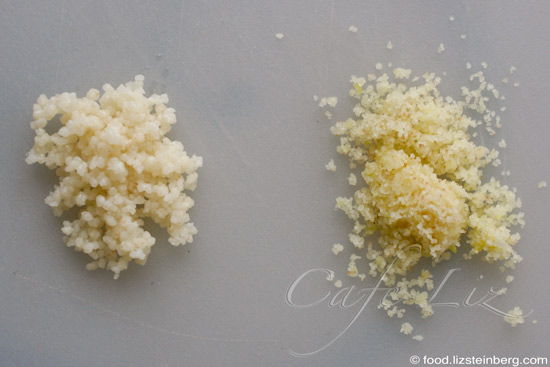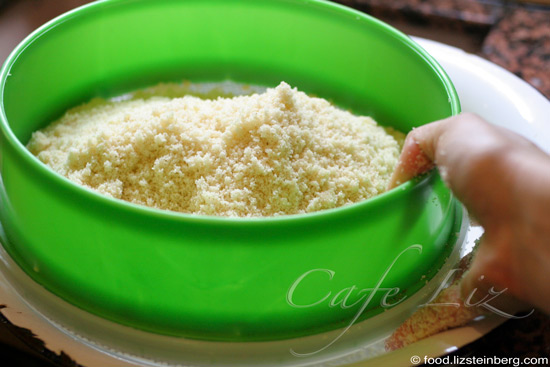
There’s a little restaurant in the Yemenite quarter with a wide-ranging menu with flagship dishes from at least four ethnicities — including jachnun, kubbeh, couscous and hummus — and it excels at all. How could this be?
Generally, when I walk into a restaurant that offers both, say, pad thai and sushi (or worse — schnitzel and sushi), I get a little suspicious about ordering either one. You’ll find lots of so-called “Asian” restaurants around here that basically make a mishmash of different ethnicities’ flagship dishes without mastering any of them.
We may not have many Thais or Japanese to lend us their culinary expertise — in one amusing news tidbit, the government is offering to train veterans as sushi chefs in the hope that they’ll replace foreign workers — but we have plenty of Yemenites, Kurds, Iraqis, North Africans and Arabs, to name a few. All these people are an integral part of society, and their foods are an integral part of the local culinary tradition.
An American once commented to me that we don’t have much ethnic food in Israel. Yes, actually we do — just from different ethnicities.
In fact, we’ve reached the point where none of these traditionally “ethnic” foods are exotic anymore. So it’s not surprising that a Tzarum (Yishkon 22, open for lunch, kosher meat) restaurant in the Yemenite Quarter would offer all these dishes, and do them well. After all, this is the mix at the base of Israeli cuisine.
Anyway, one of the secrets at restaurants of this type is that they outsource — they buy food from various expert cooks in the neighborhood.
All this is actually just an introduction to talk about couscous. Among the many dishes that Tzarum serves is couscous — as a main course, or at a steal for 5 shekels as a side dish. I never asked who makes it for them, but it’s handmade, with that special creamy taste and melt-in-your-mouth flakiness that you won’t get from the instant variety.

There’s no comparing the amount of work involved in handmade versus instant couscous, but it’s like pasta — by buying it premade (above left), you’re missing out on that freshness of the handmade version (above right). After all, there has to be some kind of payoff given the work involved.
I should credit a woman named Zohara for showing me how to make couscous. Zohara immigrated from Morocco as a young girl, and now has her own hospitality business, serving Moroccan-Israeli foods at her home in the countryside. Now in her 60s, she’s been making couscous ever since she married and left her parents’ home at age 13. Her instructions were characterized by the nonchalant vagueness of many home cooks, but watching someone work is a fine substitute for a proper recipe.
Handmade couscous is made from semolina mixed with water and oil, which gets sifted through a net several times and steamed over soup for about an hour. It requires some specialized equipment — a net strainer, and a couscoussier, which is basically a double-boiler with a steamer basket. In place of the couscoussier, you could use a metal strainer and a cheesecloth set on top of a large stock pot. (Don’t use your favorite towel, since it will probably wind up stained yellow.)
Couscous being sifted:

In the cheesecloth, ready to cook:

However, I haven’t found a substitute for the sifter. Fortunately, it’s not that expensive or large, and many stores at the local markets stock them — mine cost 30 shekels. That said, if you can’t find one, you could try to find a metal net with 3-millimeter square holes and use that instead.
This recipe makes a lot, because making extra just isn’t that much more work.
For about 8 servings:
For the vegetable soup:
- 1 large onion (±250 grams)
- 2 carrots (±250 grams)
- 2 zucchinis (±500 grams)
- 1 butternut squash (±500 grams)
- ±4 celery stalks, with half the leaves (±150 grams)
- 2 teaspoons salt, or to taste
- 1 teaspoon turmeric
- 1/4 teaspoon cumin
- pinch black pepper
(optional: You also could use vegetables such as pumpkin, cauliflower or potato, which have similar flavor profiles.)
For the couscous:
- 1 kilo semolina (2.2 pounds)
- 1 tablespoon salt
- ±360 grams water, divided (about 1.5 cups)
- ±180 grams vegetable oil, divided (about 3/4 cups)
First, start the soup in a pot large enough to hold both the soup and a metal colander with the couscous on top (I used an 8-liter/quart pot).
Chop all the vegetables, put into the pot on a medium flame, and let soften slightly. Add the salt and spices, and top with 2 liters of water. Bring to a boil, then shut the flame until you’re ready to put the couscous on top.
Prepare the couscous: You’ll need a couscous filter (a round basket with a net on the bottom; the net has 3-millimeter square holes), and two bowls large enough to place under the net.
Pour about 1/5 of the semolina and the salt into a bowl. Set aside about 220 grams of water (1 cup) and 120 grams (1/2 cup) of oil. As you mix the semolina with your hand, drizzle some of this water into the bowl as well, until the semolina starts forming crumbs. Drizzle some oil as well. Add more semolina and repeat. When you’re done, you should have added the full 220 grams water and 120 grams oil, and the semolina mixture should look crumbly. If it has clumps, break them up. (If it’s soggy, then you’ve somehow added too much water.)
Pour the crumbs into the couscous filter. Swirling your hand through the crumbs, push them through the couscous filter into the second bowl in order to break up any lumps.
Put your metal colander on top of the soup pot, checking to make sure no liquid is coming up through the bottom. Remove any extra liquid if necessary (it can be added back later, once the soup has boiled down). Put a cheesecloth inside the colander.
Dump the couscous into the cheesecloth, and put a lid on top of it all. Make sure the sides of the cheesecloth aren’t anywhere near the flame; fold them upward if you need to. Let simmer on a low flame for 15-20 minutes, which should be enough time for you to see steam filtering through the couscous (not just around the sides of the colander).
Now, filter the couscous again: Shut the flame, and dump the couscous into the filter (placed over one of the bowls). You want to pass the couscous through the filter again, but it’ll be very hot; let cool for a few minutes and/or use a spatula instead of your hand.
Mix the remaining 140 grams (1/2 cup) water and 60 grams (1/4 cup) oil into the couscous, mixing with your hand and drizzling gradually as you did before the couscous was cooked (you might want to let it cool a bit more first). The couscous should be looking nice and crumbly.
Pour the couscous back into the cheesecloth, cover, and turn the flame back on.
Let cook another 15-20 minutes. Pour the couscous into the filter again, and pass through to make sure there are no clumps. Put back into the cheesecloth to cook for another 15-20 minutes.
If your couscous is clumpy, you can pass it through the filter again before serving. I didn’t find this necessary, though.
Serve the couscous topped with vegetables and a little bit of broth.



